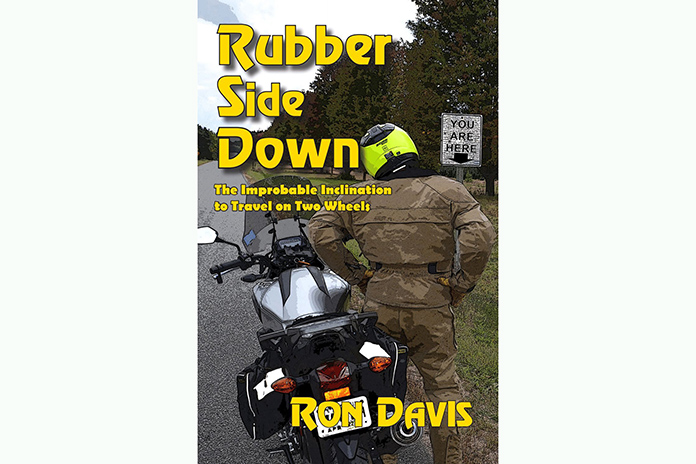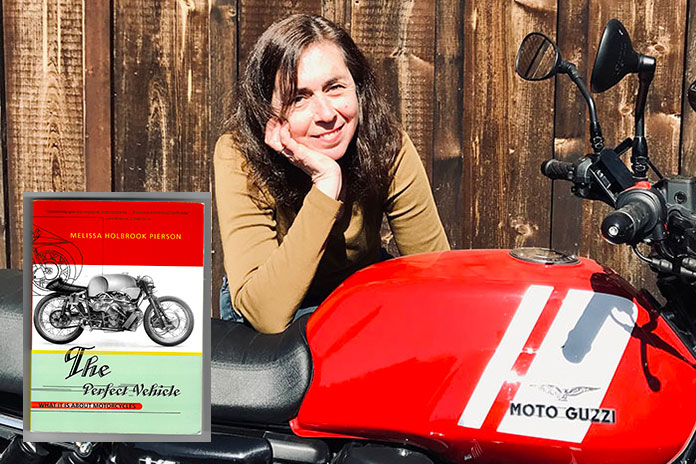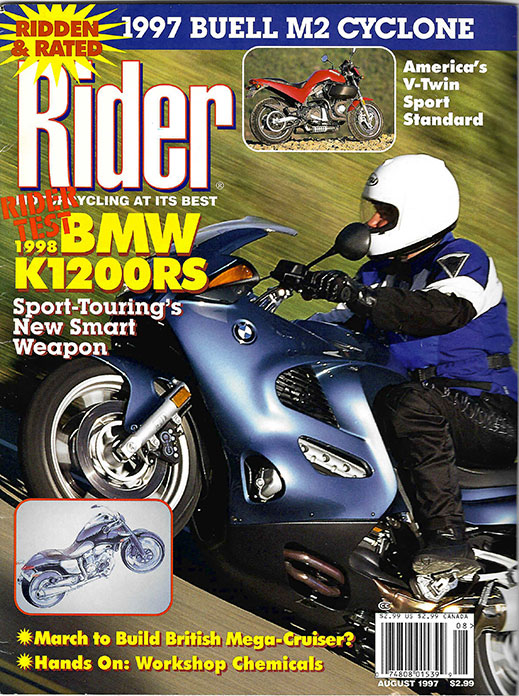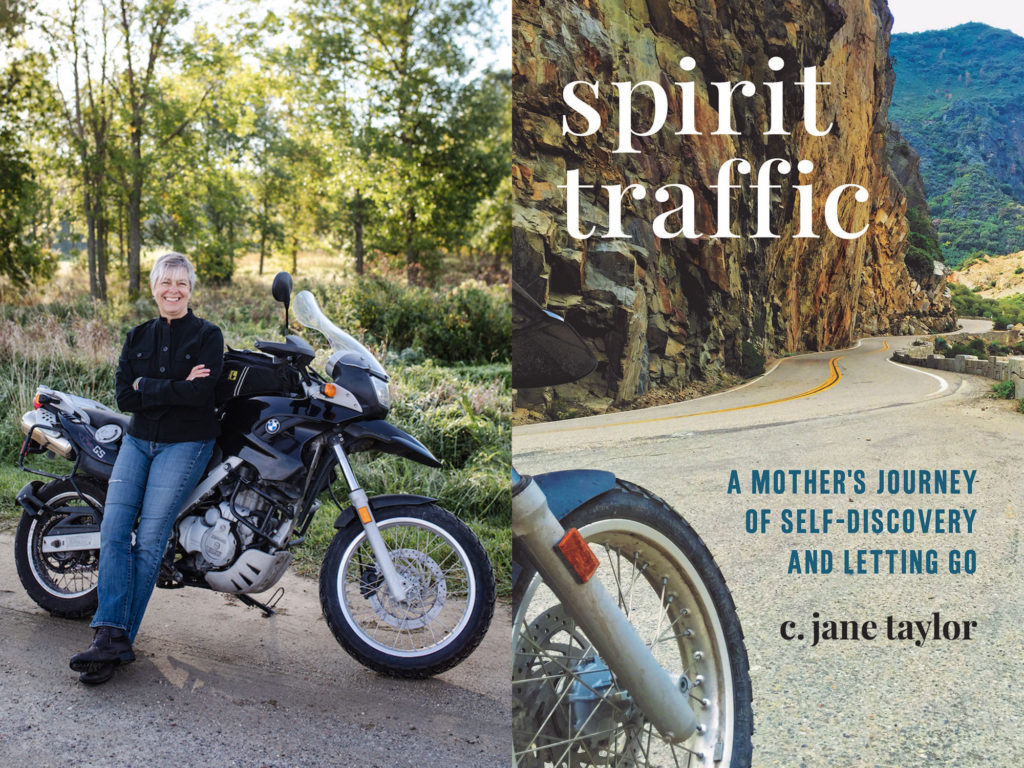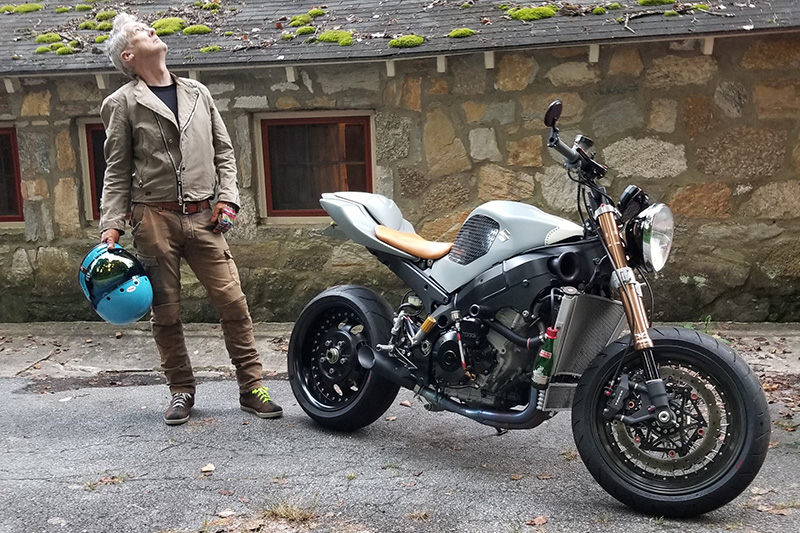Ron Davis, an associate editor at BMW Owners News, has published his second book, Rubber Side Down: The Improbable Inclination to Travel on Two Wheels. Like his first volume, Shiny Side Up, it is a compilation of published columns, essays, and musings on life behind a handlebar.
Rubber Side Down delivers 44 chapters on motorcycle rides and the necessary things that are required for a long and satisfying motorcycling life. For example:
- How do you find a girlfriend that actually wants to ride on the pillion seat?
- Where do you find a motel that caters to just motorcycle customers? (Look for one near La Crosse, Wisconsin.)
- What can you do about hazards such as a livestock truck ahead of you that suddenly splashes out a large steaming pile in your lane?
- What is the best, swerving out of your lane or standing on the brakes when a kayak comes off the roof of a car and sails into traffic?
- Is camping in parks with a motorcycle and a pup tent a good idea. Ron explains all the ups and downs and has decided roughing it is only for younger riders.
I was rolling along from chapter to chapter and enjoying everything and then I reached chapter 22, “Tip-Toeing Off the Resevation,” which begins with: Warning: The following column focuses on a motorcycle that is not a BMW. Yes, I know, HERESY!
I almost fell out of my chair. I lived in the Eau Claire area of Wisconsin for several years and I crossed Ron’s path many times. I often asked him if he’d like to try one of my bikes to get a taste of other brands other than BMWs.
“Try my Indian FTR,” I’d say. Or, “How about the Royal Enfield – it has about the same amount of power as a BMW at one third the price.”
“No, No! I am a shameless Disciple of BMW!”
“What about that Triumph 900 in the back of the garage? Just as old school as a BMW, twin cylinders, air cooled, and 50-year-old styling.”
“Well, maybe sometime, but not today.”
And here I am picking myself up off the floor after seeing the photo of Ron and his 2014 Honda NC700X at the beginning in chapter 22, his hand covering the Honda logo and his face in “hand caught in the cookie jar” grimace!
After my heart rhythm settled back down, I continued on until I reached chapter 30, “Glenn Stasky, Innovation Man.” Chapters from 30-34 contain profiles of several BMW riders and photos of their Germanic steeds. I turned back to the inside cover flap to see if the book can be sold only to BMW owners at BMW outlets. It doesn’t appear that is the case.
As I worked my way toward the end of the book, I came at last to chapter 39, “Exploring The Twisted Road.” Finally, we must be getting to the hundreds of twisting miles near Eau Claire and La Crosse. Other chapters have given us looks at fishing in the Eau Claire River and how to deliver pizzas in Eau Claire, so this must be the chapter on the incredible riding scene in northwest Wisconsin. The chapter turned out to be a plug for Twisted Road, a motorcycle rental service Ron used when vacationing in New Mexico.
Why a hot bed for motorcycling such as Eau Claire was completely ignored in the book is very strange. Ron, you may not have participated, but the oldest motorcycle charity ride in the U.S. is in Eau Claire’s backyard. Indian Motorcycle sponsors the Flood Run that follows the Mississippi River Road and even raffles off a new Scout each year. As far as I know, BMWs and even Hondas are allowed to participate. This event from what I have seen would have provided fodder for a fat chapter in the book.
Rubber Side Down: The Improbable Inclination to Travel on Two Wheels is an enjoyable read, regardless of the brand(s) of motorcycle you prefer, but BMW acolytes will find it particularly appealing. Published by Road Dog Publications, the book is 252 pages and retails for $19.99 on Amazon.
ABOUT RON DAVIS
Ron Davis caught the motorcycle bug at age fifteen. Forty years and about 20 bikes later, he has remained an enthusiast, especially for bikes carrying the BMW roundel. Over that period, he’s also squeezed in a full-time career teaching high school and university classes in writing, photography, and publishing while also working as a social media writer for the tourism industry in Northwest Ontario and as an associate editor and columnist for BMW Owners News. More often tongue-in-cheek commentary than a technical or travel focus, his writing has been featured by BMW Motorcycle Magazine, On The Level, Backroads Motorcycle Tour Magazine, Volume One, Our Wisconsin, and the National Writing Project, and his essays (some about riding) can be heard regularly on Wisconsin Public Radio’s “Wisconsin Life.”
The post Rubber Side Down by Ron Davis | Book Review first appeared on Rider Magazine.
Source: RiderMagazine.com

